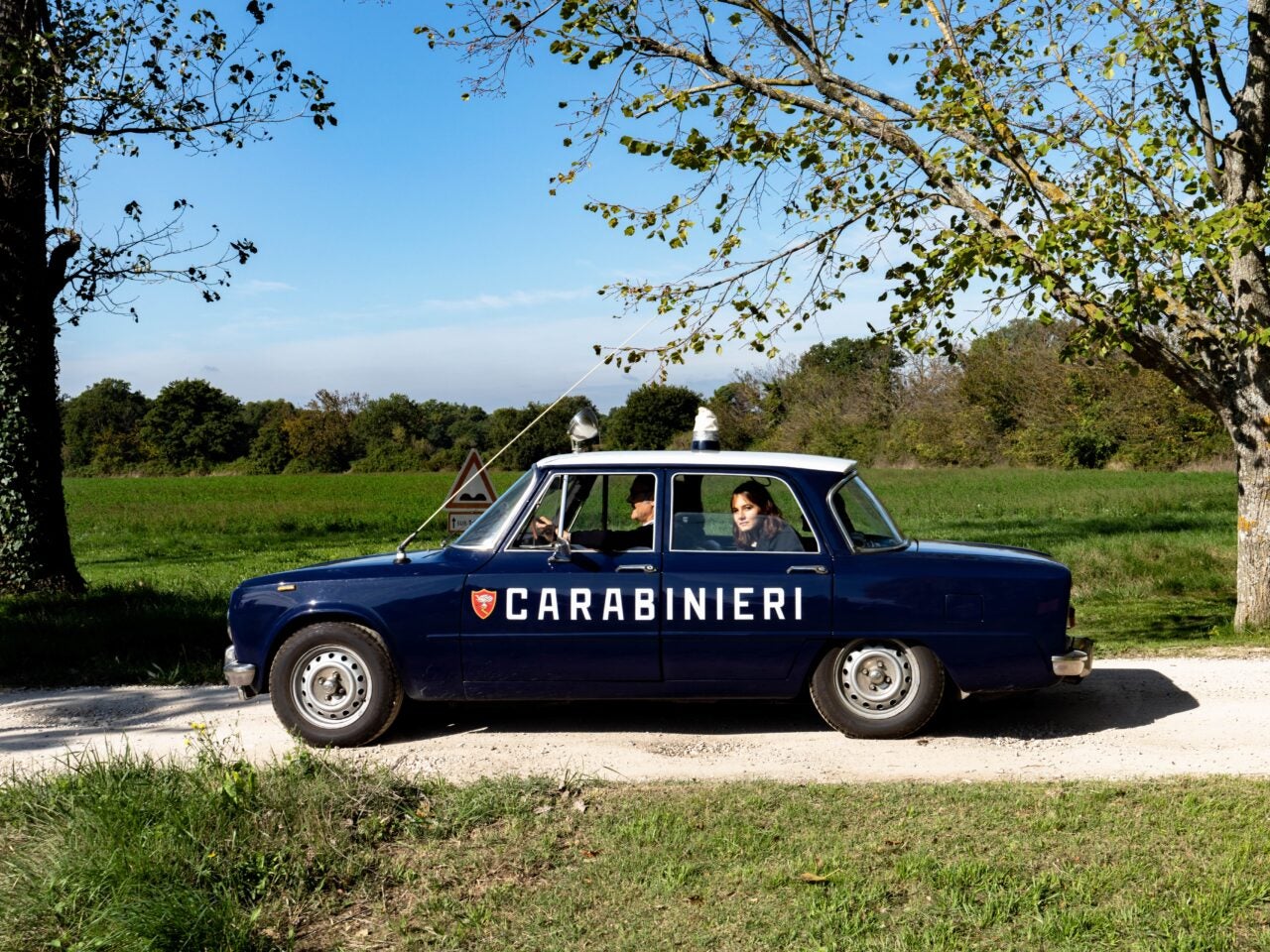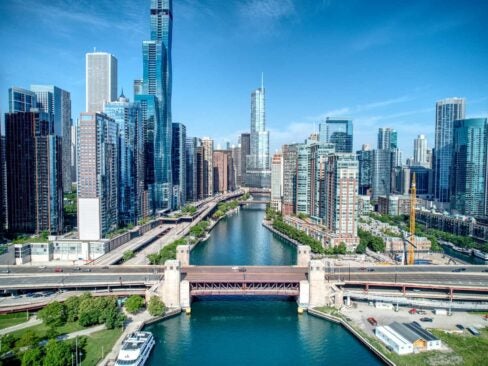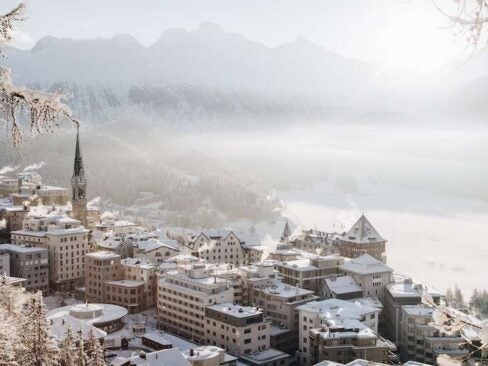It all started with an email from a dear friend in France: “Come and drive the old route to St Tropez, Route Nationale 7.” They were organizing a vintage car rally from outside Aix-en-Provence where they make wine and live in a wonderful 18th century chateau. There is one thing about wine-making families in France, they know a lot of other wine-making families, so this trip promised some interesting cars and good wine discoveries. Our 1972 280SE Mercedes had just done a long trip through France, which was not without a few delays due to mechanical problems, so I was slightly apprehensive, however, my excitement at the prospect of a trip down the ‘old route’ to the south and St Tropez slightly blurred my vision of reality and we set off to meet our friends at the Domaine de Beaupré.
We arrived at the country village of Saint Cannat and immediately visited the local vintage car ‘doctor’ for a quick engine check before commencing the three-day drive. Saint Cannat is a small market town which you probably would not know of if you are not from the region, it is situated a short drive from Aix-en-Provence in ‘real’ France, the residents are polite and helpful and the local wine is excellent. For those not fortunate enough to stay at the chateau, The Mas de Fauchon provides comfortable bedrooms and an excellent restaurant with a great local wine list. I especially recommend the crispy confit de canard served with excellent dauphinoise potatoes or any of the grilled meats from the open fire. The restaurant is cozy in early and late season and in summer opens to the gardens of the hotel.
We spent the night with the organizer of the rally at The Chateau de Beaupre, so on arrival we had a comprehensive wine tasting in the cellar shop of the Beaupré vineyard and determined to purchase several wines to send home. The 2015 Chateau de Beaupre Collection du Chateau red wine is particularly good with a full nose smooth taste. They are well known for their rose and their 2019 Collection du Chateau is smooth, light and well priced. The Collection Baron Maxime is more reasonably priced and drinks well all summer long.
[See also: Getting to Know Entrepreneur Clare de la Poer Beresford]
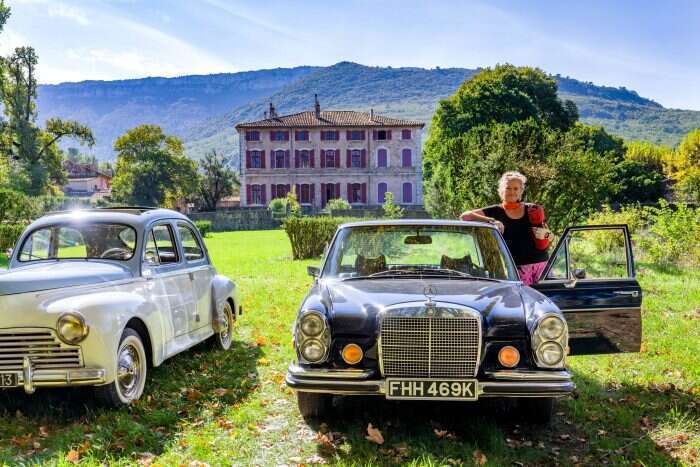
The author prepares for her three-day drive on France’s Route Nationale 7 / ©Pedro Almohada
The next morning we awoke to a frosty sunrise, a walk before breakfast led us through the recently harvested vines and nearby woodlands. By 11am all participants had arrived and had been given the driving map and booklet for the first day of the rally, instructions were slightly complicated by the fact that there were road closures outside Aix and we would just need to follow the lead car hoping not to get lost. Exiting the driveway of the domaine with 30 cars onto the aforementioned Nationale 7 was no easy feat, luckily one of the participants drove an Italian police car and managed to stop the flow of traffic sufficiently for us.
The first stop on this route was the charming Provençal village of Pourcieux. The wine growers’ houses that surround the village chateau are overlooked by the Massif Saint Baume to the south and the Montaigne Saint Victoire to the north. We picnicked in the garden of the Chateau and tasted the owner’s rose and white wines. The white which is made from the Rolle grape is very similar to the Vermintinos of Tuscany. Today the colorful picturesque village with its shops and marketplace is mostly unknown to travelers apart from those who brave the mountain bike route in the massif Sainte Baume. There is a good little restaurant in the nearby village of Pourrieres Chez Arnaud where they serve a delicious dish of sautéed prawns with garlic accompanied by some crisp local white wine.
After lunch in the gardens of the Chateau, teams were formed for a slightly raucous boules competition and then off we drove to the next stop on the day’s itinerary, St Maximin.
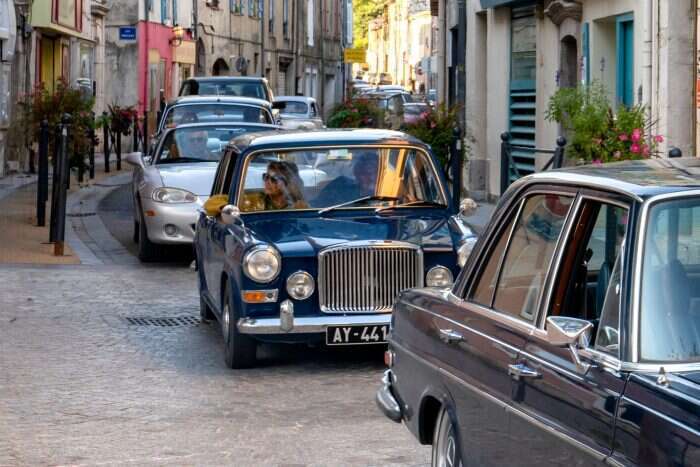
Arriving in Tourves in the middle of the afternoon the village square was abuzz with locals drinking / ©Pedro Almohada
The pretty roman town of St Maximin with its 14th century Gothic basilica is where the tomb of Mary Magdalene, discovered in 1279, is contained in the crypt. Mary Magdalene traveled to France after the death of Jesus and is said to have lived in a cave near St Maximin while spending nearly thirty years converting local residents to Christianity. The tomb while slightly creepy is set in the vaults of the magnificent basilica which is definitely worth visiting. St Maximin is a very pleasant place to stop off for a couple of days, stay in the former Dominican convent overlooking the formal French gardens and enjoy the history and cultural events offered locally. On July 22 each year which is the saints day of Mary there is a tremendous procession through town.
From St Maximin we continued driving the vineyard lined N7, flanked on the right by the Massif St Baume while on the left we had stunning Provencal countryside views. Arriving in Tourves in the middle of the afternoon the village square was abuzz with locals drinking their aperitifs and playing boules, the atmosphere could not get more provencal. Tourves is the site of the infamous traffic jams from the 1960s when most of France headed south to the beaches of St Tropez and the rest of the Cote D’Azur. Here the Route Nationale 7 is a single-lane road and one can only imagine the scenes at the beginning and end of the summer holidays when families headed back home. Thankfully today there is a one-way system to alleviate the problem.
From here the countryside became a little wilder, fields and streams flanked the plane tree-lined road which narrowed as we headed to the Chateau La Lieue close to Brignoles. The family-run Chateau was one of the earlier domaines to practice organic farming in Provence, we stopped off and tasted some fantastic rose white and red wines in the cool barrel-lined cellar before arriving at our overnight stop in a local hotel. I highly recommend the Chateau La Lieue Rose Coteaus Varois which is crisp and dry and well priced.
The A8 Motorway cuts through the plains to the north of Pourcieux, St Maximin and Tourves, making a rapid descent towards the coast and bypassing all this wonderful countryside and culture that we enjoyed on the Nationale 7.
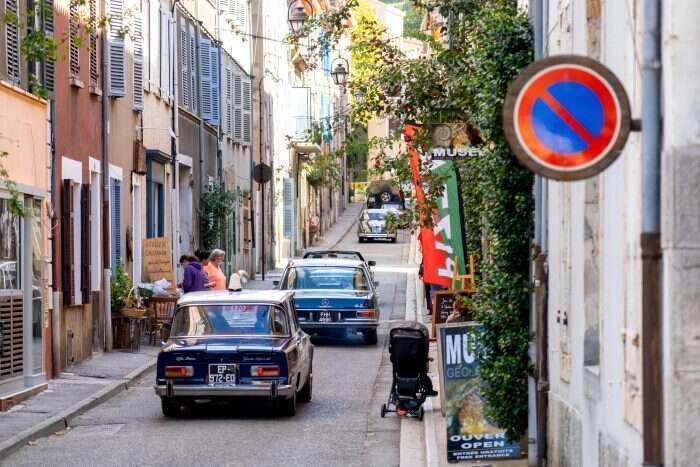
Collobrieres has to be one of the most charming and often bypassed villages in southern France / ©Pedro Almohada
The next day dawned with a distinct drop in temperature, our summer clothes were abandoned for attire more suited to the mountain drive and walk ahead of us.
At the pretty Varois village of Besse sur Issole we stopped for the simple yet tasty breakfast of café au lait and a flakey buttery croissant. From Besse we left the N7 to cross the Massif des Maures via a forest road or route forestiere. We climbed up the narrow road, passing local farmers hunting in the woods with their dogs, the road winding uphill sometimes at a very steep incline through copses of oak trees. One can take many routes south to the coast from the N7 depending on the destination of choice, ours for that day was Collobrieres via the chapel of Notre Dame des Anges. We parked the car at the chapel and greeted by a cold wind we walked briskly to the viewpoint which offers a stunning view over towards Hyeres peninsula and the islands of Port Cros and Porquerolles. A quick visit inside to view the cloister and chapel and we set off down the small forest road to rejoin the D39 heading towards Collobrieres.
Collobrieres has to be one of the most charming and often bypassed villages in southern France, visitors and locals alike make the mistake of wanting to avoid the twisting roads that access the village from all sides. Collobrieres situated on a small river in the center of one of the largest chestnut forests in Europe, is architecturally authentic and picture-perfect, with shaded squares pastel-colored houses and a small river running through the leafy village. Lunch can be eaten in a number of terraced restaurants, shaded by plane trees overlooking the river. We chose the restaurant at the Hotel des Maures on its lovely riverside terrace shaded by plane trees. From here after a hearty lunch of daube de sanglier (wild boar stew) served with mashed potatoes and a glass of local red wine, we purchased some warm roasted chestnuts and drove in the direction of our next overnight stop La Garde Freinet.
The D14 winds first through the leafy river valley before climbing once again up to the crest of the Massif des Maures. Our afternoon stop at the historically rich Chartreuse of La Verne included a brief tour of the Carthusian Monastery a visit to their gift shop which sells fantastic ceramics and hand-made jewelry and offers some great photo opportunities.
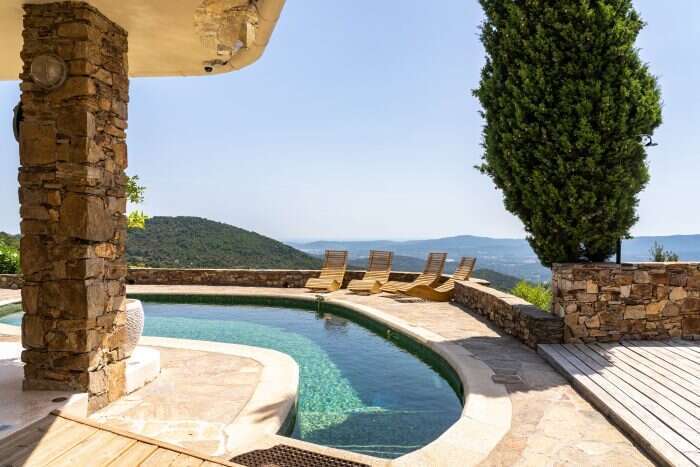
Enjoying the views from the stunning six-bedroom Villa Benz / ©Pedro Almohada
Arriving at La Garde Freinet just before sunset we were welcomed at our overnight lodging, the stunning six-bedroom Villa Benz, in time for an aperitif and dinner in the village. The next day we shopped at the bi-weekly provencal market in the square of La Garde Freinet, buying wonderful provencal tapenade, saucisson sec and local rose. This is one of the best local food markets in the area and not to be missed. Stop in for a café au lait before, or a glass of pastis after shopping at the local gathering spot Le Bar du Soleil. It is always bursting with activity, especially on market days. They serve a very good baguette with saucisson sec and cornichons to keep your energy up for browsing the market or hiking up to the old town.
The road down to St Tropez from La Garde Freinet, one of the main access roads to St Tropez, is not without impressive views of Grimaud and the Golfe de St Tropez. Our destination in the port of St Tropez a wonderfully renovated townhouse awaited us. Welcomed by the five-star concierge we were whisked inside – bags carried, car parked and a glass of rose immediately offered to ease us into the experience of living on the port of one of the chicest towns in France.
Staying at St Tropez Port House is a luxurious and spoiling experience, the concierge is on call for anything you might need and the apartment overlooking the picturesque port is extremely well appointed and comfortable.
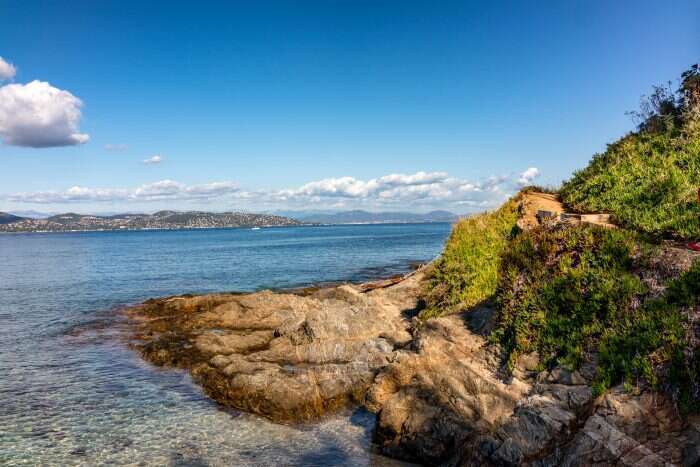
My favorite activity when in St Tropez is to walk the path along the coast “ Le Sentier du Littoral” / ©Pedro Almohada
My favorite activity when in St Tropez is to walk the path along the coast “ Le Sentier du Littoral” from the old port of St Tropez heading west towards Les Salins so the next day with some friends in tow we headed out late morning on foot in the direction of what promised to be an excellent lunch.
The coastal walk from St Tropez to La Plage des Salins usually takes about two and a half to three hours, it’s advisable to take water with you as while it’s not a strenuous walk there is nowhere along the way to buy a drink. From the old port you cross through the St Tropez graveyard, a resting place with a view for sure, follow a low coastal sandy path adjacent to clear blue water reminiscent of Petit Cul de Sac in St Barthelemy, then passing the sailing club the terrain starts to climb as you round the corner taking you past rock pools and small jetties. Eventually, you will discover a couple of wild beaches and finally around a point you arrive at le Plage des Salins and its lovely beach restaurant. There is no more welcome sight than a cold bottle of rose after a brisk walk. We sunk into our chairs with our feet in the sand sipped the cold wine and enjoyed the views. The shellfish and fish are excellent here and I particularly recommend the “friture” small-fired fish with a tartar sauce and the crab and grapefruit salad. It’s essential to reserve as it is a very popular restaurant.
Driving the old route to the south allowed us to discover so many lovely villages, people and historic buildings, on our next trip we will certainly avoid the motorway and make a detour.
Where to stay
Aix en Provence: Bastide Provencal
St Cannat: Mas de Fauchon
La Garde Freinet: The Benz House
St Tropez: The Tropez Port House
Where to eat
Aix en Provence: Hotel Pigonnet
St Cannat: Mas de Fauchon
Collobrieres: Hotel Restaurant des Maures
Cogolin: Chez Nous
St Tropez: Plage des Salins beach restaurant





